
|
Bio-pesticides Production at HH level as well as CBOs level
-
Viksat
Almost every household has livestock and getting benefit from animals. However the amount invested for rearing and the output received is not matched as expected due to various reasons. The below mention interventions have been initiated to enhance the
Read more »
|
|
|

|
Biocompost /Vermiculture production technology using local business
-
Viksat
In tribal areas, animals’ excreta and other farm waste are lying unused in bulk. Although some of the farmers are preparing compost out of the available materials but they are unaware of the technology which give high quality of compost
Read more »
|
|
|

|
Production of Organic Turmeric and value addition on the harvested products
-
Viksat
· Area specific scientific cultivation practices of organic turmeric to be developed
Read more »
|
|
|

|
Integrated Farming System for better livelihood through participatory approach in Semi Arid area
-
Viksat
i) Demonstration on fruits crops, creeper vegetables, pulses/oilseeds and cereal crops through participatory approach at farmer’s field in small area [< 1 acre]. Growing the area suitable fruit crops such as mango [Mangifera Indica] and lemon
Read more »
|
|
|
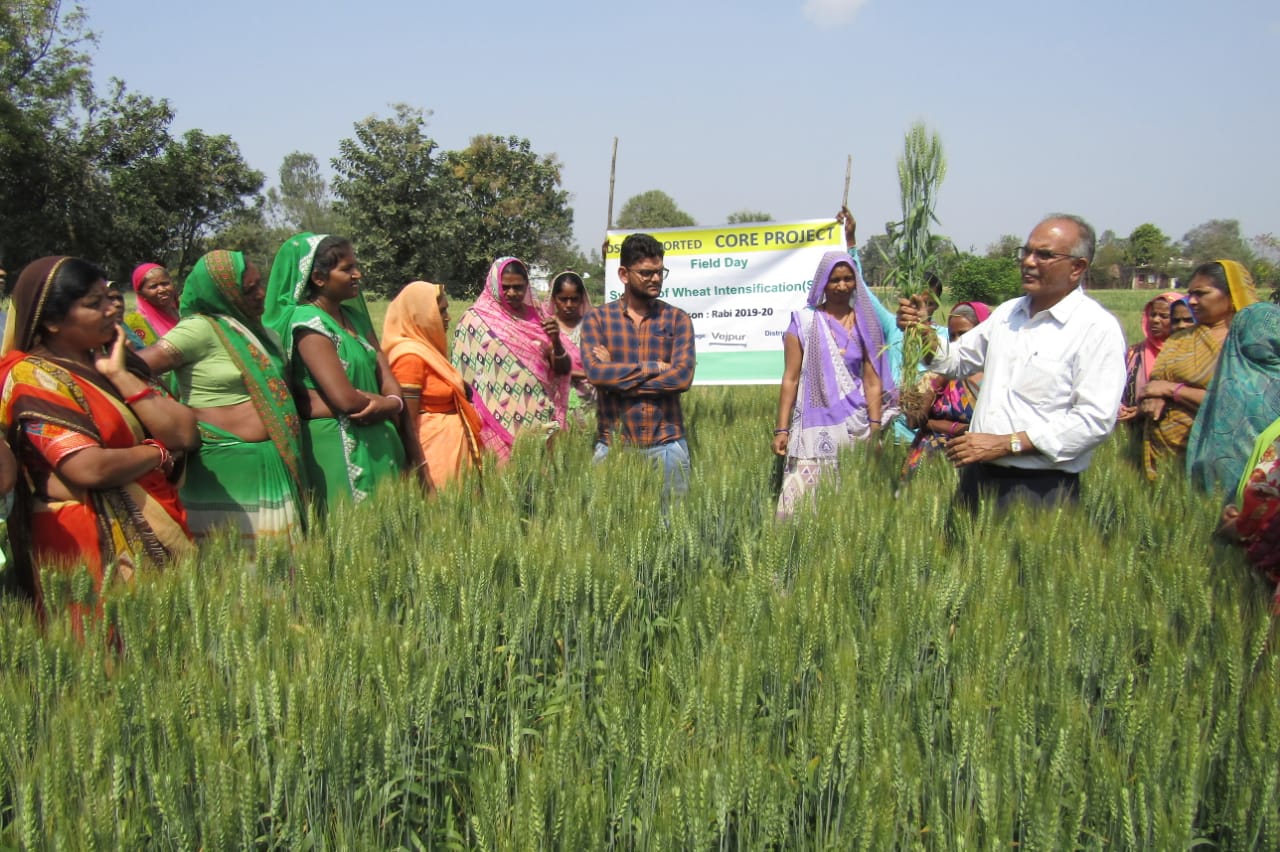
|
SWI method of Wheat cultivation and SMI method of maize cultivation
-
Viksat
These techniques require minimum quantity of seeds and optimum use of water for crop cultivation. This is in turn help to cut down the input cost and water requirement thus reduced total expenditures. The standard package o
Read more »
|
|
|

|
Tissue Culture and Microbial Technology Programme (TMT)
-
M. S. Swaminathan Research Foundation Community Agrobiodiversity Centre
Pseudomonas Multiplication Technique for Field Application
The process for the development of Pseudomonas multiplication unit using locally available materials is bein
Read more »
|
|
|
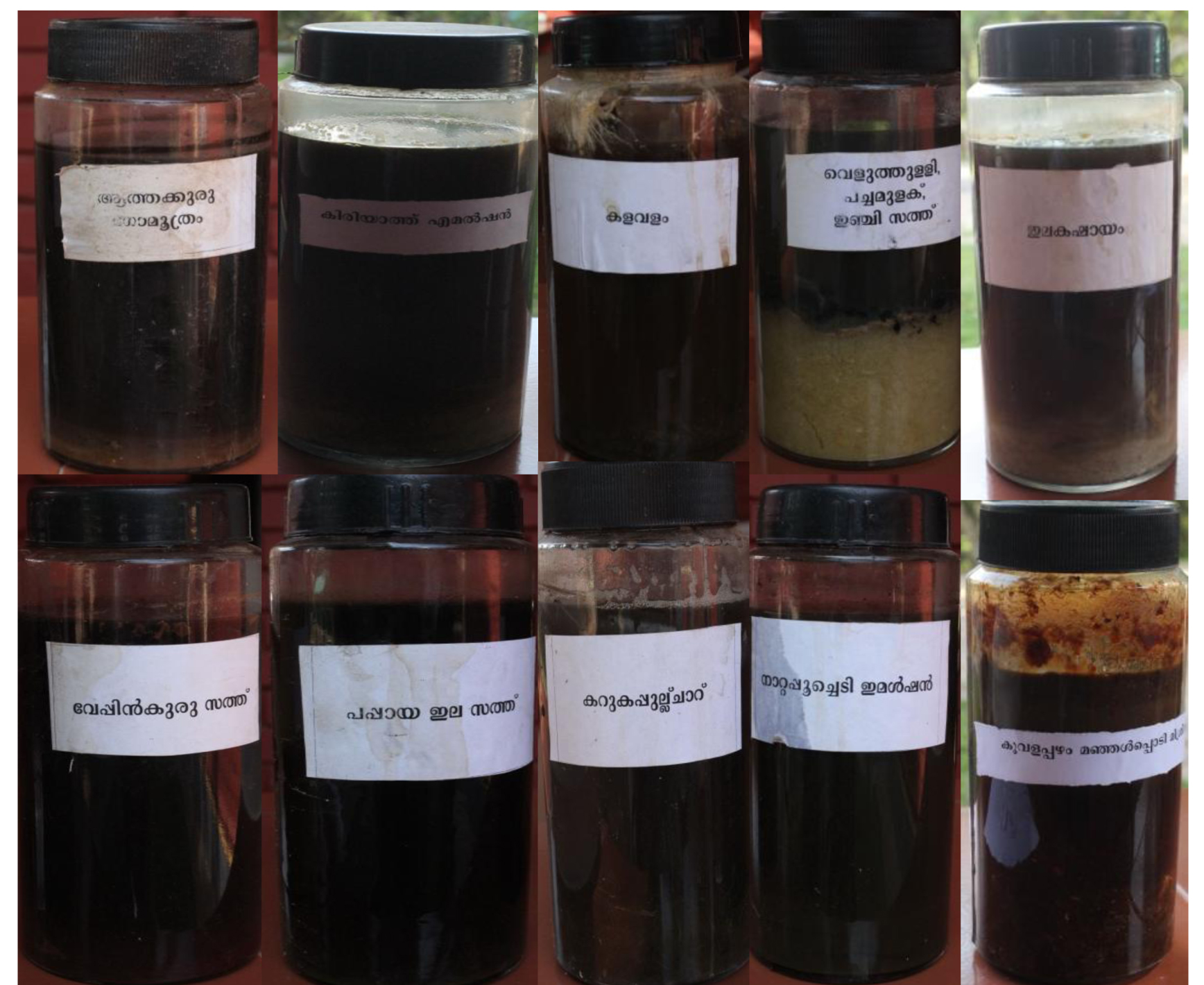
|
BOTANICAL PESTICIDES AND PLANT TONICS
-
M. S. Swaminathan Research Foundation Community Agrobiodiversity Centre
Botanical pesticides and plant tonics are plant extract based agricultural inputs used as
alternatives to synthetic chemicals in organic cultivation. In an effort to promote sustainable
agricultural practices, the technical know-how of a series of plant based products are being
Read more »
|
|
|

|
Rice seed villages
-
M. S. Swaminathan Research Foundation Community Agrobiodiversity Centre
Rice seed villages with a group of farmers is being formed for the production of traditional
paddy seeds of Wayanad to cater the seed needs of themselves, fellow farmers of the village and
farmers of neighboring villages in appropriate time and at affordable cost. Appropriate trai
Read more »
|
|
|
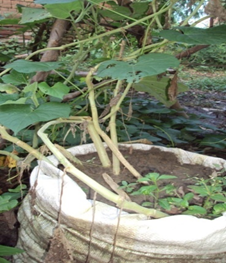
|
Vertical farming
-
Gorakhpur Environmental Action Group (GEAG)
Farmers in the area grow vegetables that creep over the soil, such as sponge gourd and bottle gourd, but these crops do not survive due to excess water and humidity in the soil. Farmers have adopted an innovative technique of growing creeping vegetables by usin
Read more »
|
|
|
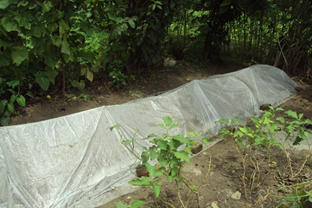
|
Developing raised bed low tunnel poly-houses
-
Gorakhpur Environmental Action Group (GEAG)
Raising crops in nurseries during summer for transplanting in winter used to be extremely difficult due to extensive waterlogging. Farmers have provided training to prepare and use poly-houses for growing seedlings. In this practice, first, the farmers prepared a raised seed bed (1 to 1.5 f
Read more »
|
|
|
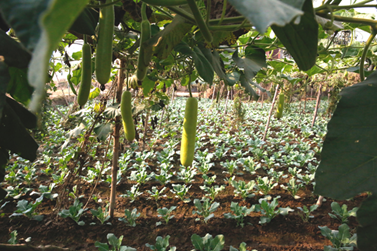
|
Establishing Resilient Farming techniques in flood prone areas for small land holding farmers
-
Gorakhpur Environmental Action Group (GEAG)
This type of farming techniques is based on the principle of integrating household, livestock and agriculture, and seeks to enhance diversity and recycling in the farming systems. Low cost external bio-inputs, appropriate crop varieties, space and time management, seed
Read more »
|
|
|
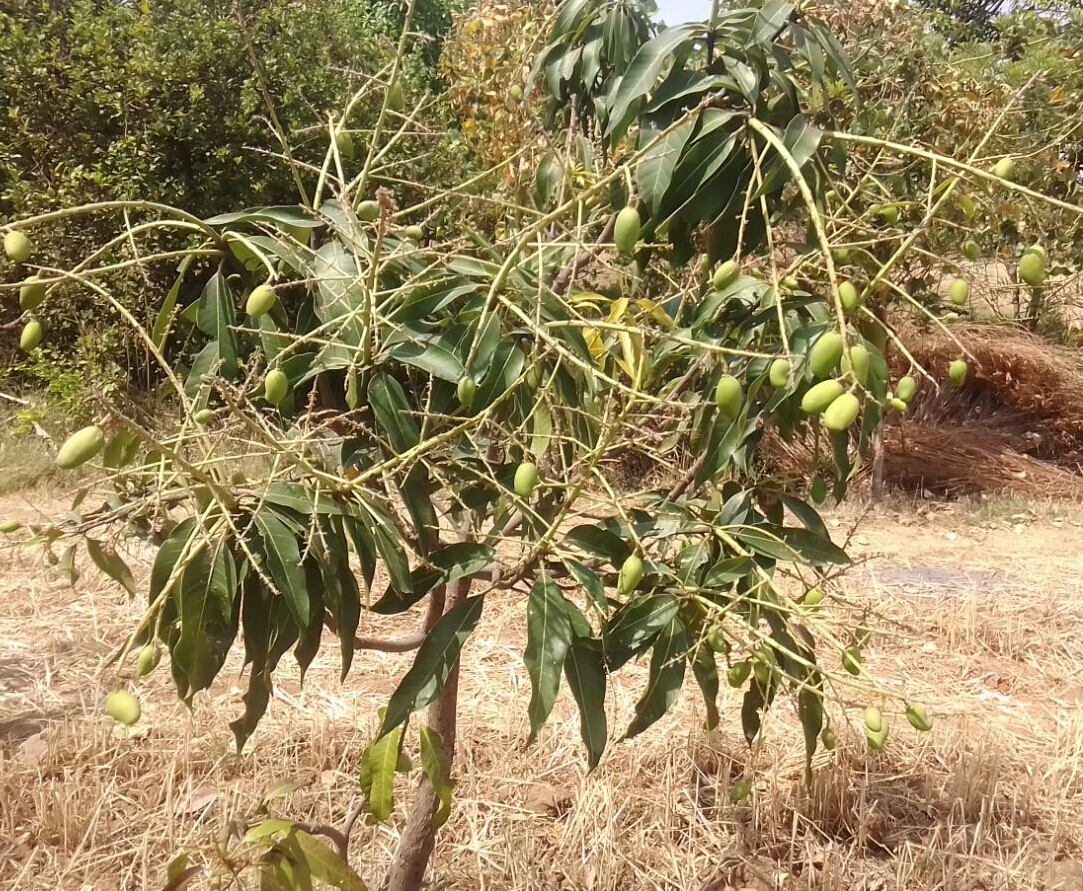
|
Promotion of alternative land use practices as climate resilient (2009-2014, 2016-2017)Ist and II nd Phase
-
Madhya Pradesh Vigyan Sabha
Agro-forestry is one of the most conspicuous land use systems across landscapes and agro-ecological zones. With food shortages and increased threats of climate change, interest in agro-forestry is gathering for its potential to address various on-farm adapta
Read more »
|
|
|
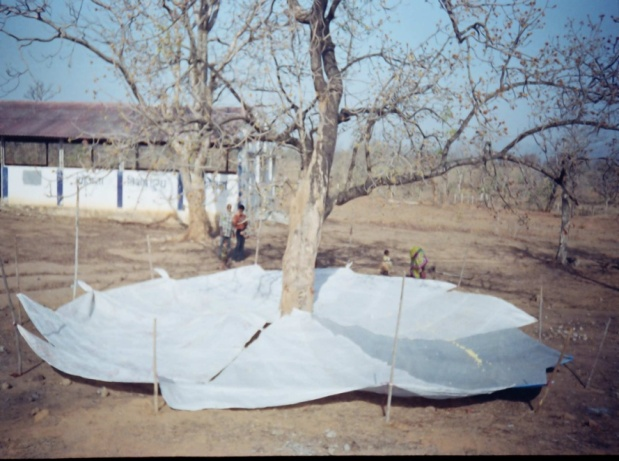
|
Promotion of Sustainable Harvesting of Non Timber Forest Produces (2009-14)Ist Phase
-
Madhya Pradesh Vigyan Sabha
Non-timber forest products (NTFPs), also known as non-wood forest products (NWFPs),
Read more »
|
|
|

|
Development of rapid cost effective testing methods to identify whether the crop has been grown organically(Phase II: 2014-19).
-
Shri AMM Murugappa Chettiar Research Centre (MCRC)
Image forming techniques such as Circular Paper Chromatography, Picture Rising Chromatography and Sensitive crystallization are interesting approaches that can be employed to distinguish the organically grown crop product. These technologies are easy and
Read more »
|
|
|
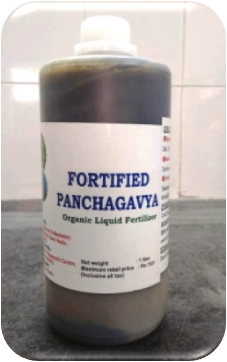
|
Fortified Panchagavya(Phase II: 2014-19)
-
Shri AMM Murugappa Chettiar Research Centre (MCRC)
Production of Panchagavya using five cow based products (Cow Dung, Cow Urine, Ghee, Curd and Milk) , rotten bananas and Jaggery and fermented for 21 days. This liquid manure is well known and us
Read more »
|
|
|
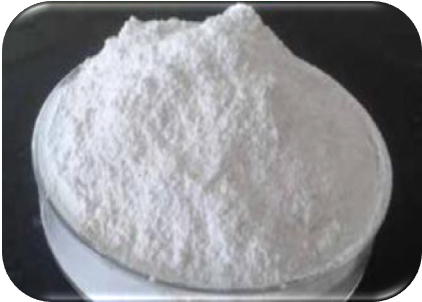
|
Biofertilizers(Phase I: 2014-19) and Biocontrol agents:Biopesticdes (Phase II: 2014-19)
-
Shri AMM Murugappa Chettiar Research Centre (MCRC)
Growing concerns about the use of chemical fertilizers and pesticides on environmental health, safety to human beings and destruction of non-target pests have led to the development of biological fertilizers and pesticides. At present, Organic farming pra
Read more »
|
|
|

|
Promotion of domestication and cultivation of promising medicinal plants (Phase I: 2009-14)
-
Shri AMM Murugappa Chettiar Research Centre (MCRC)
Farmers/ land owners can cultivate the medicinal plants that grow widely and having medicinal values to make the sufficient availability of these herbs and at the same time the farmers/ land owners can earn profit. The cultivation of Gymnema sylvestri
Read more »
|
|
|

|
Vitamate (Humic acid) (Phase I: 2009-14)
-
Shri AMM Murugappa Chettiar Research Centre (MCRC)
Farmyard manure (FYM) is not available in larger quantity and hence application of less amount of FYM to soils lead to decrease in humic content in the soils.A simple technology was developed at MCRC on product
Read more »
|
|
|

|
Biodynamic manures (CPP, BD500 and BD compost) (Phase II: 2014-19)
-
Shri AMM Murugappa Chettiar Research Centre (MCRC)
Biodynamic agriculture is a unique organic farming system that deals with soil fertility improvement through soil organic management practices. The technology involves preparation of cow horn manure (BD 500), Cow Pat Pit (CPP) and Biodynamic compost (B
Read more »
|
|
|

|
Development of salt tolerant earthworm composting system (Phase I: 2009-14)
-
Shri AMM Murugappa Chettiar Research Centre (MCRC)
Salt tolerant earthworm compost as bio-amendment can be used to enrich quality and for reclaiming saline or alkaline or problematic agricultural soil. The sea grasses and drift weeds in coastal area can be exploited for income generation by the costal peo
Read more »
|
|
|

|
Panchagavya - as a liquid formulation (2012 - 13) Phase I
-
Vivekananda Kendra - Natural Resources Development Project
Liquid bio formulations, a promising component for organic farming with multiple benefits as it acts as a growth promoter and pest repellent. It is usually produced from agro waste, cow urine leaf extract etc., and hence it can be prepared by the farmer at very low cost i
Read more »
|
|
|
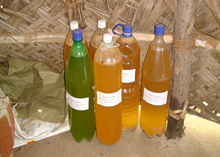
|
Enhanced Fish Amino technology(2013 - 14)Phase I
-
Vivekananda Kendra - Natural Resources Development Project
The effect of fish formulation as it contains rare essential amino acids, chelated calcium, prosperous, and a variety of other nutrients.
This technology used to produce cost effective value added growth promoters and growth boosters from milk fish meat and egg w
Read more »
|
|
|

|
Alternative Analytical Technology (AAT) for Soil Nutrient analysis through image processing Chromatograms(2018)Phase I
-
Rural Communes
The basic objective of the soil-testing is, therefore to give farmers a service that will give them a comprehensive soil profile of their land. This will lead to better and more economic use of fertilizers and better soil management practices th
Read more »
|
|
|
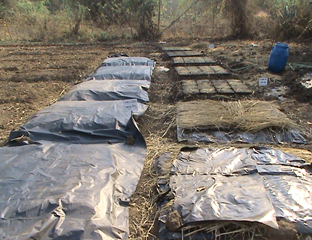
|
Nutrient Rich Raised Bed Nurseries i.e. Mat nursery(2016)Phase I
-
Rural Communes
Producing young and robust seedlings is a challenge for rice farmers everywhere. Especially the farmers were finding it difficult to use machinery for transplanting crops like rice and ragi.
In order to produce young healthy saplings, a healthy nutrition rich so
Read more »
|
|
|

|
Vertical Bag Agriculture(2016)Phase I
-
Rural Communes
Vertical vegetable sack garden is nothing but the cultivation of the vegetables and even medicinal plants for daily use grown in the sack in vertical arrangement.
Read more »
|
|
|

|
Panchagavya - as a liquid formulation
-
Vivekananda Kendra - Natural Resources Development Project
Chemical fertilizers, pesticides and weedicides are becoming very costly and create lot of problems for soil, environment, humans and livestock. So the world is moving towards sustainable farming and organic farming with the help of organic manure, bio manure and bio pest control agents., <
Read more »
|
|
|

|
Enhanced Fish Amino technology
-
Vivekananda Kendra - Natural Resources Development Project
Plants need more than 20 nutrients. Starting from N.P.K, the major nutrients and ending with micro nutrients. On extensive action research carried out a Vivekananda Kendra for the last 15 years it is found that many compounds which are available the nature can influence the plant growth and the p
Read more »
|
|
|

|
Medicinal Shiitake Mushroom Cultivation for Women Livelihood(2017)Phase II
-
Himalayan Research Group (HRG)
Lentinula edodes (Berk.) Singer, known as "Shiitake"
and commonly called Japanese mushroom, is a white
rot wood decay fungus.
Cultivation of Shiitake in India is yet to start and
customization of technology for natural growing in
mountain carried out.
Cultivation of
Read more »
|
|
|

|
Fodder Development Programme for Women Drudgery Reduction(2016- )Phase I Continued in Phase II
-
Himalayan Research Group (HRG)
• Fodder availability and cultivation is limited and mainly agriculture crop residues, wild tree and weed species provide fodder.
• In this scenario popularization of improved fodder practices and new technology suitable to mountain
&n
Read more »
|
|
|

|
Chirayita Cultivation, Processing and Value Addition(2018)Phase II
-
Himalayan Research Group (HRG)
• Communities in the Himalayas are dependent upon natural resources and extract plants from nature to meet their health and economic demands
• Prized and endangered species of genus such as Swertia (Chirayita), Picrorhiza (Kutki), Taxus (Rakhal)
Read more »
|
|
|

|
System of Rice Intensification following seed sowing directly in the field(2017)Phase I
-
Rural Communes
System of rice intensification (SRI) is a well-known practice and followed
by many of the farmers. Under DST-Core support project Rural Communes introduced
SRI to the farmers and implemented it successfully. During the project, the team found
some difficulties in transplanting youn
Read more »
|
|
|

|
Intra specific grafting technology in Coffee
-
Peermade Development Society (PDS)
This is a technology developed by the CORE team to raise drought resistant coffee by grafting commercial varieties in tree coffee a wild variety with strong root system.
Read more »
|
|
|
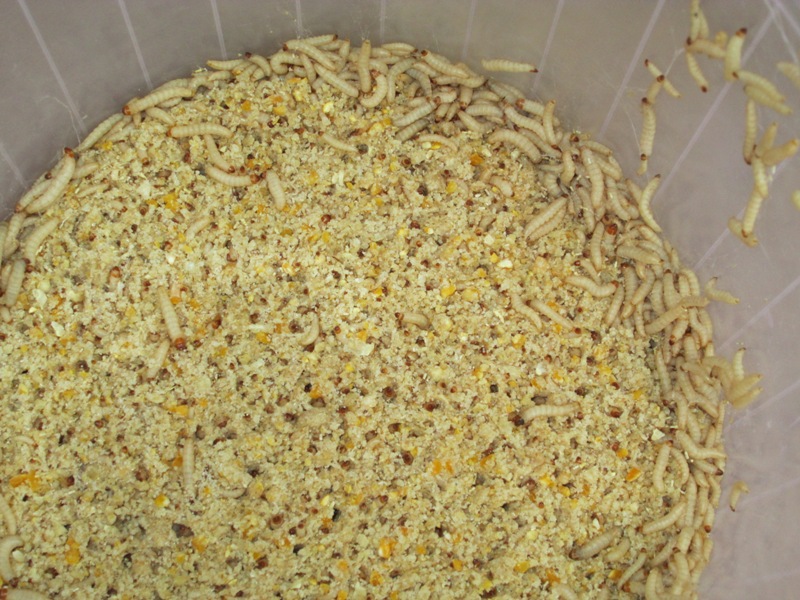
|
Bio control agents popularized
-
Peermade Development Society (PDS)
CORE team adopted various organic farming technologies from R&D organizations includes Trichoderma harzianum, Pseudomonas fluorescens, Entamo Panthogenic Nematode (EPN), Metarihizium anisopliae, Beauveria bassiana. We mass multiplied them in the microbiology laboratory and supplied to the far
Read more »
|
|
|

|
Shoot tip culture in Vanilla
-
Peermade Development Society (PDS)
Generally stem cuttings are used for vanilla cultivation but in the last few years due to serious Fusarium infections almost all the vanilla vines destroyed. So we developed a protocol for mass multiplication of vanilla by shoot tip culture. The developed plantlets showed vigorous growth.
Read more »
|
|
|

|
Somatic embryogenesis in Black pepper
-
Peermade Development Society (PDS)
This is a technology for producing true to type planting material in black pepper from nucellar tissues. CORE team developed two media, solid and liquid medium with defined combinations using MS medium as base. By this method CORE team successfully produced true to type and disease free planting
Read more »
|
|
|

|
Multi layer farming technology in rubber plantations
-
Peermade Development Society (PDS)
Major problems faced by the rubber farmers are mono-cropping and price fluctuations. CORE team developed a package for solving this issue by developing a package for multilayer farming using black pepper and cocoa. For the successful demonstration of the technology we have standardized the spacin
Read more »
|
|
|

|
New rejuvenation technology in old senile pepper plants
-
Peermade Development Society (PDS)
One of the major problems in pepper cultivation is no viable technology for rejuvenation of old plants. So farmers are adopting replanting of the old plantation but this is not affordable for small and marginal farmers. So The CORE scientist developed a new method of rejuvenation to solve these p
Read more »
|
|
|

|
New technologies for enhancing branching in pepper.
-
Peermade Development Society (PDS)
In the conventional harvesting method farmers are collecting only the pepper spikes which initiatesonly one sprout each branch, in the modified harvesting method CORE team recommends to harvest spikes and a portion of apical meristem of the branch. So the meristematic activity in the lower nodes
Read more »
|
|
|
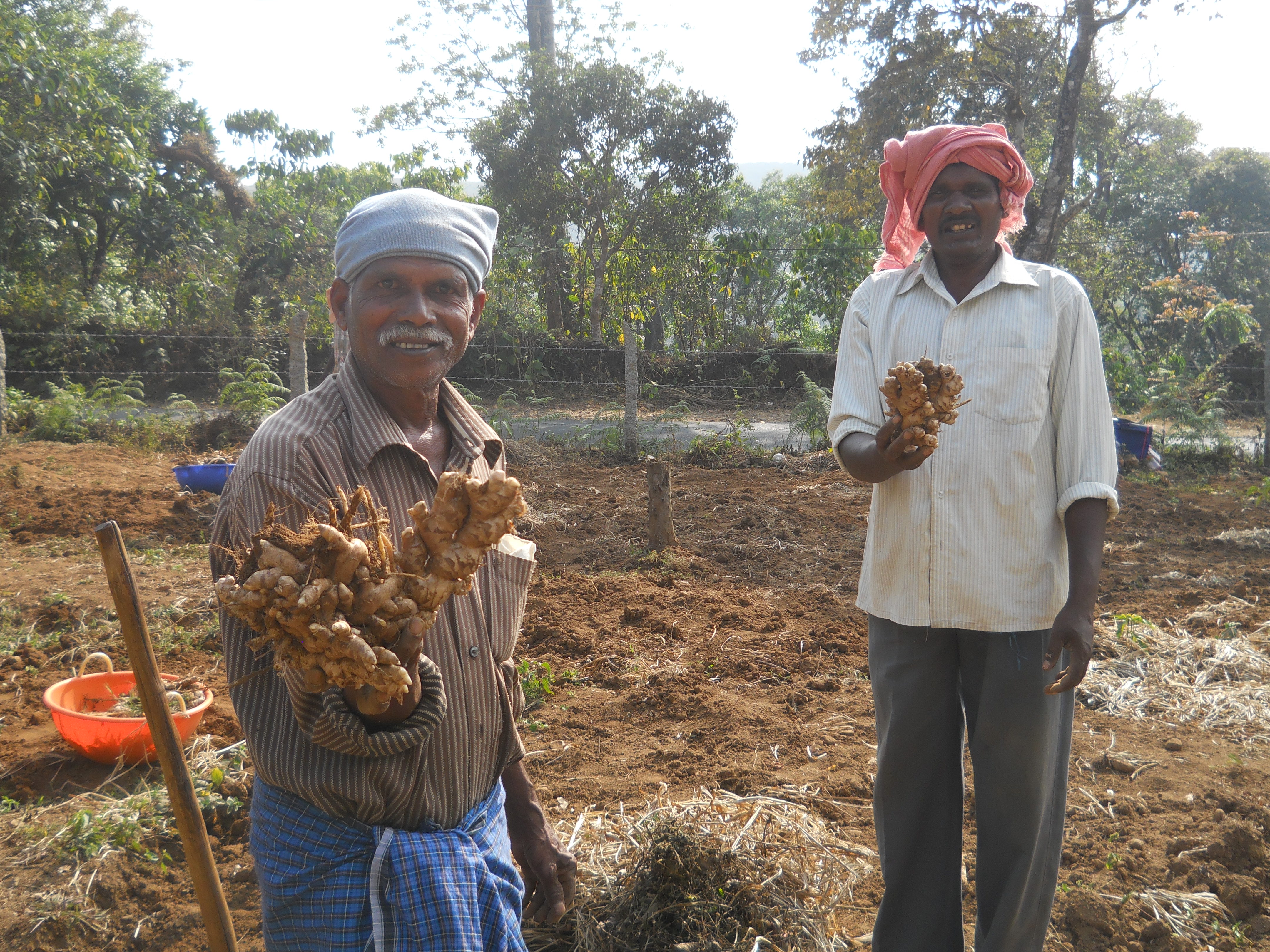
|
Demonstrated improved varieties of ginger and turmeric.
-
Peermade Development Society (PDS)
CORE team introduced improved varieties of ginger and turmeric from Indian Institute of Spices Research and Kerala Agriculture University. These varieties have high content of Oleoresin and Curcumin as compared to traditional cultivars. So the produce get good market acceptance in the internation
Read more »
|
|
|
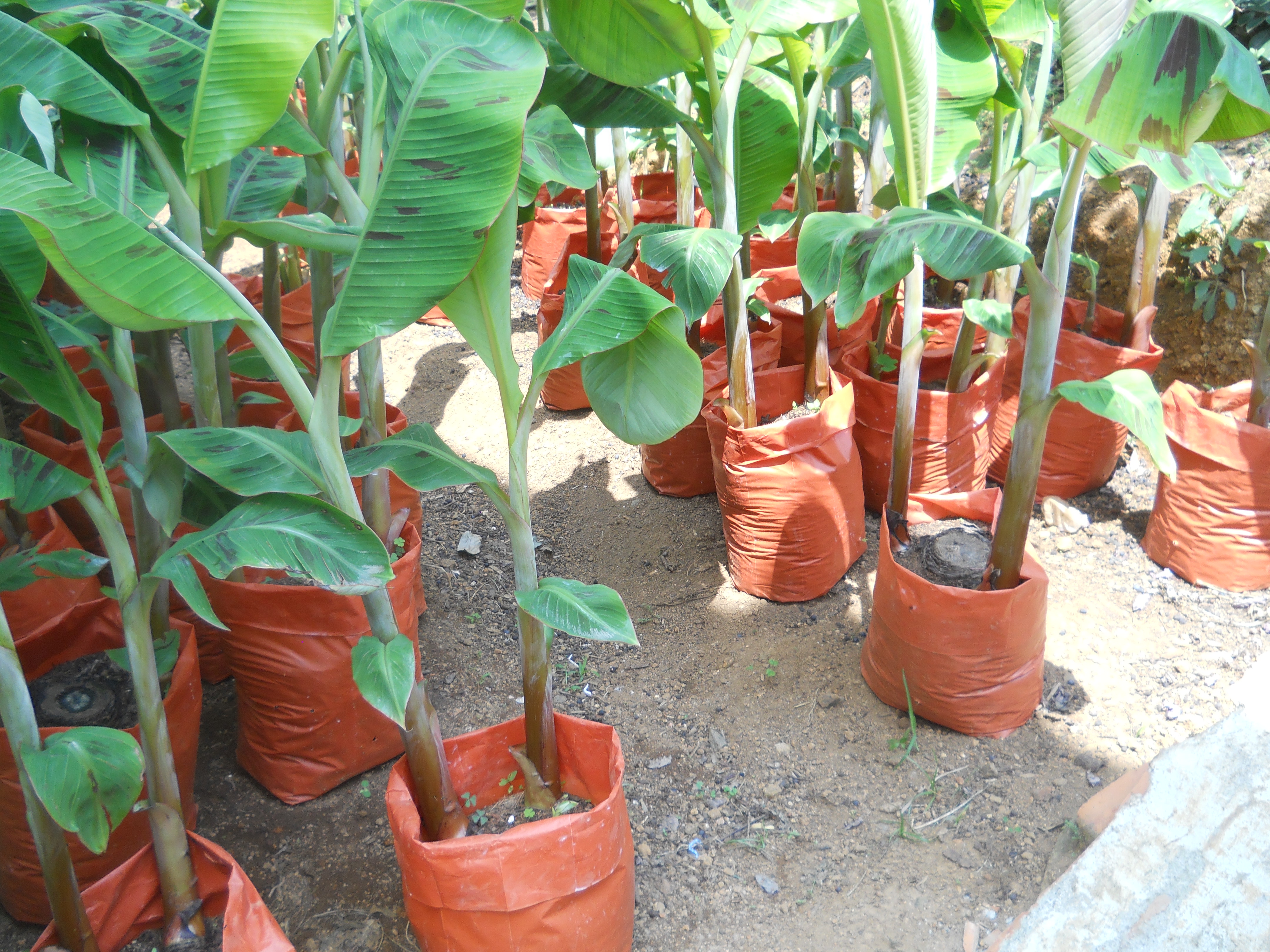
|
Decapitation technology in Banana - a modified nursery technique for high density planting
-
Peermade Development Society (PDS)
This is an innovative low cost technology ideal for high density planting in banana (HDP). HDP is gaining popularity in Kerala in the last few years, but the cost of cultivation is high because farmers need three suckers instead of one sucker. So for solving this problem CORE team developed a low
Read more »
|
|
|
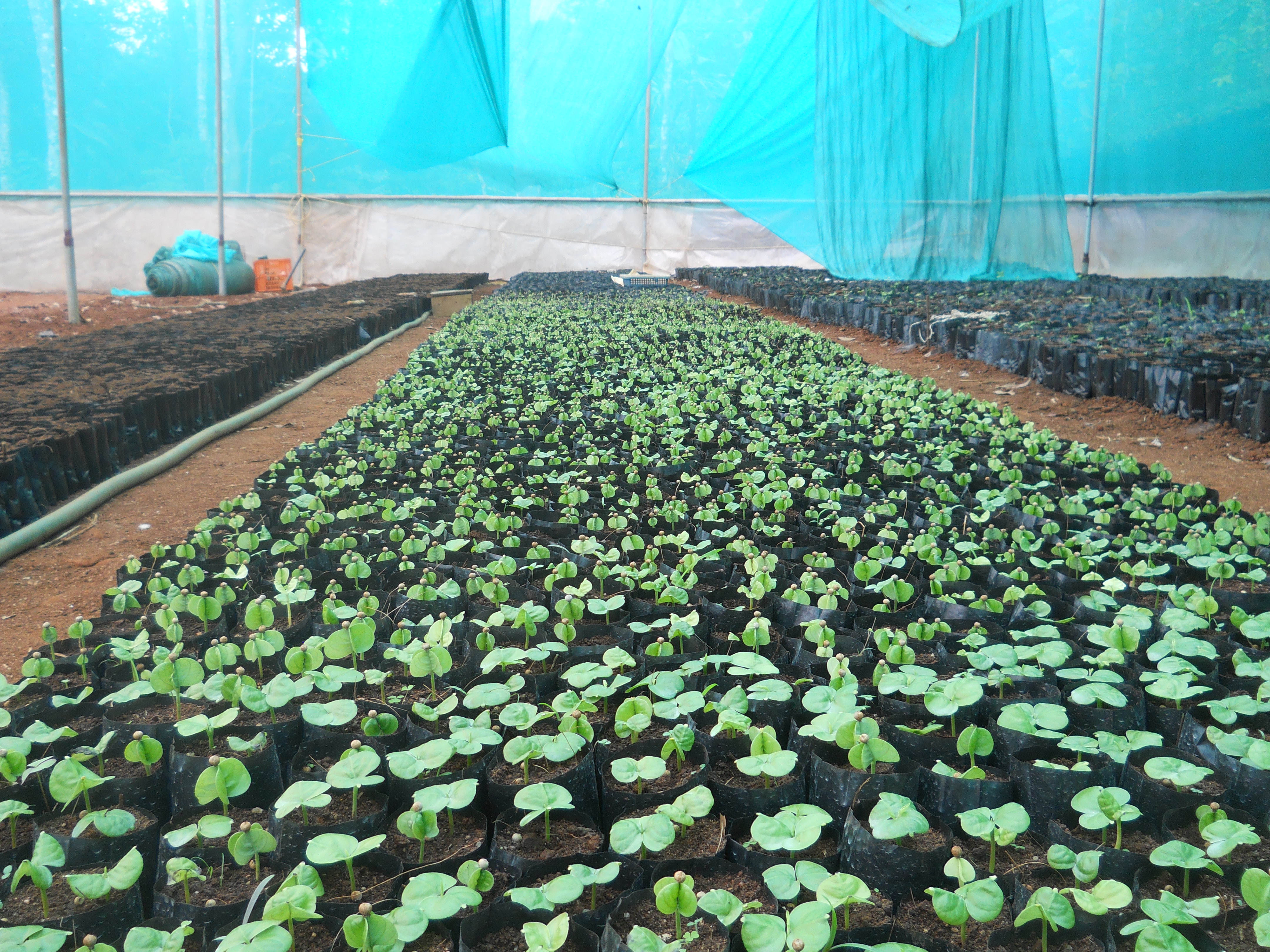
|
Quality planting material production in black pepper through seed germination
-
Peermade Development Society (PDS)
A survey conducted by the CORE team in Idukki district proved that almost 70% of the planted stem cuttings were not surviving due to strong summer and high systemic infections whichdiminished black pepper production every year. For solving the issue CORE team developed a package for seed germinat
Read more »
|
|
|
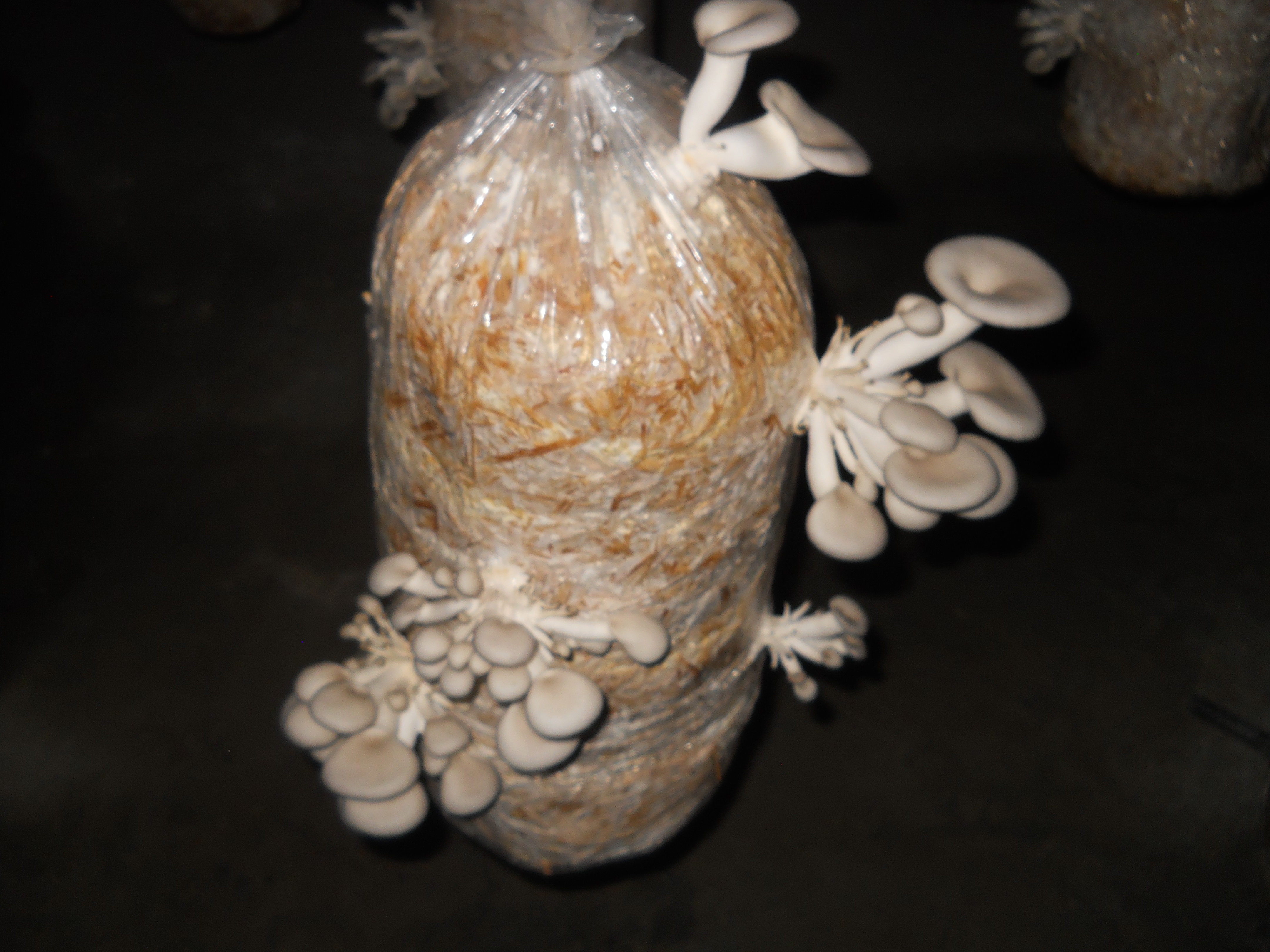
|
Technologies to Improve bioefficiency in Mushroom cultivation
-
Peermade Development Society (PDS)
Core team observed that low nitrogen content of paddy straw (substrate), insufficient air circulation in mush room growth chamber and clump drying are the major problems leading to bioefficiency.
Technologies Developed
Read more »
|
|
|

|
Livestock related Technologies(2014-18)Phase I
-
BAIF Development Research Foundation
Several interventions have been planned and introduced in order to optimize the income from livestock resources (Mainly local breeds of cow and buffalo and improved breeds of goat) for arid communities
Read more »
|
|
|

|
Water related technologies(2012-17)Phase I
-
BAIF Development Research Foundation
Interventions have been made aiming at scouting and introducing suitable technologies for tapping of rain water, to facilitate innovative storage, ensure water use efficiency and create revive traditional practices and there by create long term res
Read more »
|
|
|

|
Agri|horti|forestry and fodder related technologies(2014-18)Phase I
-
BAIF Development Research Foundation
Interventions have been made aiming at development of suitable Farming System Based Model in arid parts by taking into consideration the arid specificity Specific Technologies:
- Successfully pilot-tested in farmers’ plots salinity-resis
Read more »
|
|
|

|
Development of Cosmetic Products(2015-17)Phase II
-
Society for Technology and Development (STD)
Trial are being carried out on preparation & standardization of Creams & scrubs from locally available natural raw material such as wild apricot oil, Beeswax & Aloe vera gel. 2 creams , Natural Hand moisturizer & Crack cream have been formulated,standardized & analysed for sc
Read more »
|
|
|

|
Single barrel kiln for char powder
-
Appropriate Rural Technology Institute (ARTI)
This kiln consists of a single barrel, in which the biomass to be charred is ignited from the top. As the biomass burns, it gets pyrolysed. Arrangements have been made in this kiln to burn the Pyrolysis gas in the kiln itself. The biomass gets pyrolysed from top to bottom, as the Pyrolysis fro
Read more »
|
|
|
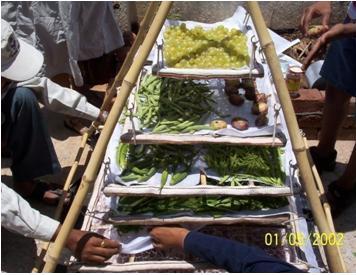
|
Solar Dryer
-
Appropriate Rural Technology Institute (ARTI)
This is a simple four sided pyramid, in which four poles are joined together to form a square base. Four poles, each resting on one of the corners of the square, are joined together to form the pyramid. All the poles are provided with hooks or loops at their ends, so that the pyramid can be eas
Read more »
|
|
|

|
Low cost green house
-
Appropriate Rural Technology Institute (ARTI)
The primary function of a greenhouse is to provide plants with additional carbon dioxide. Neither heating nor cooling is required under climatic conditions in Maharashtra. Green plants respire during the night, producing carbondioxide. Carbon dioxide is also generated by soil microorganisms throu
Read more »
|
|
|

|
Nursery business based on seasonal crop species
-
Appropriate Rural Technology Institute (ARTI)
Seedlings of seasonal crop species would always be in demand and the market is right at the doorstep of a rural nursery. Seedlings growing in a nursery require very little space and water. This technology allows the farmer to adhere to the desired date of planting, even if the field conditions ar
Read more »
|
|
|

|
Leaf as a propagule
-
Appropriate Rural Technology Institute (ARTI)
A leaf of a dicot plant, detached from the plant along with its axillary bud, is treated with a rooting hormone and kept in a high humidity chamber, the petiole produces roots, while the bud grows into a shoot, producing an entire plant from a single leaf.
Read more »
|
|
|

|
New Nursery Techniques
-
Appropriate Rural Technology Institute (ARTI)
Almost 80% of dicotyledonous species can be propagated by the simple method of rooted cuttings, if the cutting are treated with a rooting hormone and kept under conditions of high atmospheric,,humidity. A low cost high humidity chamber, costing just Rs. 200 per m2, and the protocols for hormonal
Read more »
|
|
|

|
Side drilled needles for bio-pesticide application on banana(2012)Phase I
-
Mitraniketan
Problem: The Central Tuber Crops Research Institute has developed a bio-pesticide extracted from cassava leaves which proved to be effective against pseudo-stem weevil.
Read more »
|
|
|
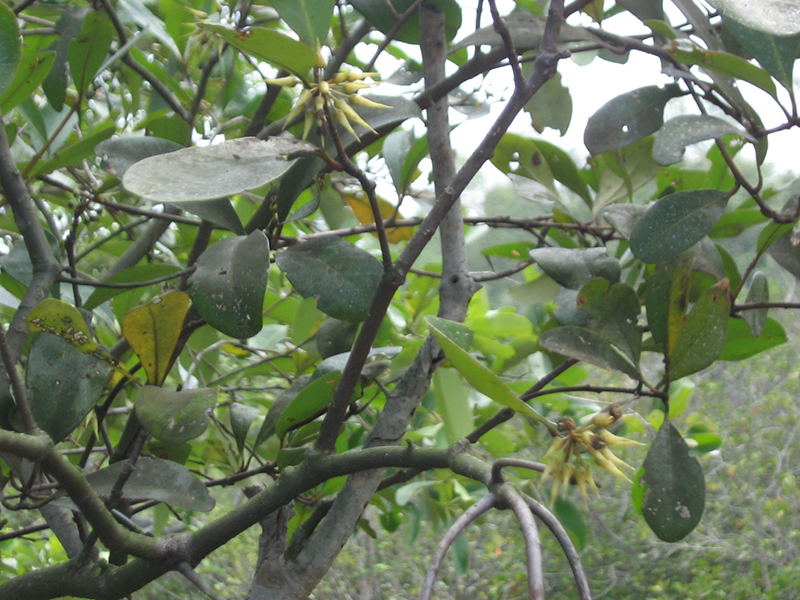
|
Apiary with promotion of Honey-bee flora
-
Vivekananda Institute of Biotechnology
Apiary and cultivation of honey bee flora are complementary to each other as the honey bee from apiary helps in pollination and consequent increase in productivity and honey bee flora acts as a source of nectar for the honey-bee. Apiary also helps in income ge
Read more »
|
|
|
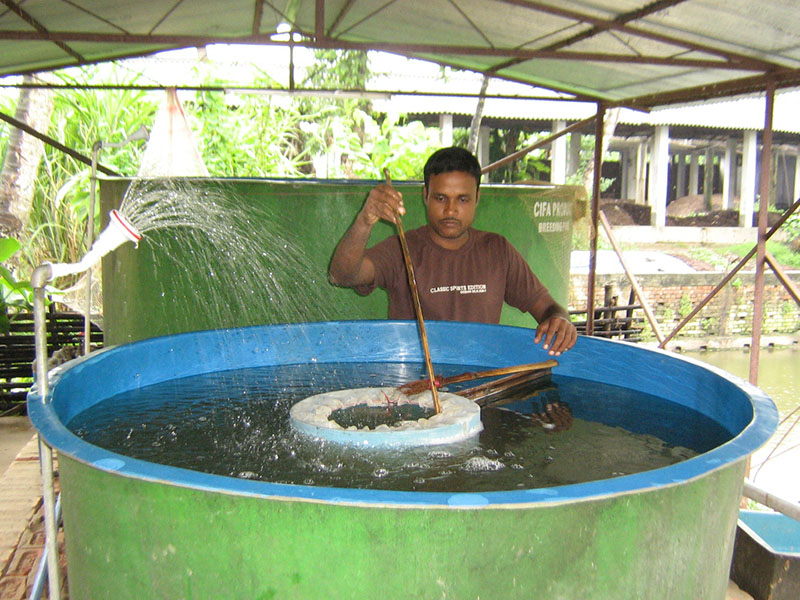
|
Induced breeding for production of fish spawn
-
Vivekananda Institute of Biotechnology
Providing quality fish spawn is a major problem in this region and even more in places like Sagar Island of West Bengal. A technology for production of fish spawn was adapted from CIFA, Bhubaneswar from where a Portable hatchery has been procured a
Read more »
|
|
|

|
Integrated Crop management
-
Vivekananda Institute of Biotechnology
Comprises of Integrated Nutrient Management (INM) and Integrated pest management (IPM), Soil analysis and use of organic, bio and chemical fertilizer on the basis of recommendation of soil analysis, pest and disease management through cultural, mechanica
Read more »
|
|
|

|
Utilization of Kigella sp. fruits for the generation of gas in biogas plants
-
Vivekananda Institute of Biotechnology
Kigella africana, locally called as Sausage tree, has large sized fruits, 30–100 cm long and up to 18 cm broad; it weighs between 5–10 kg. This fruits of this plan
Read more »
|
|
|

|
System of Rice Intensification (SRI)
-
Vivekananda Institute of Biotechnology
This is a technique different from the conventional practices of rice cultivation where rate of production increases but cost of cultivation decreases. Using this technique a farmer can Transplant a 10-12 days old single rice seed ling on field having thin fil
Read more »
|
|
|

|
In vitro production of hairy root of pea nut in bio reactor as a source of resveratrol.
-
Vivekananda Institute of Biotechnology
Previously transformed hairy roots of pea nut are grown on artificial medium. Quality resveratrol can be extracted from the hairy roots. Using this technique Resveratrol can be collected in high quantity without any impurity.
Read more »
|
|
|

|
Use of low cost flat bottles for the production of bio- pesticide, Trichoderma
-
Vivekananda Institute of Biotechnology
As per standard method, it is produced in conical flask or round bottom flask which is of high cost. Instead of that flat glass bottles, in vogue for commercial purpose, are used for the preparation of Trichoderma viride.
Read more »
|
|
|

|
Design and development of dehusking machine for minor millets (Kondo and Kutki)(2014)Ist Phase
-
Madhya Pradesh Vigyan Sabha
With the association of Central Institute of Agriculture Engineering (CIAE) we have been developed dehusking cum threshing machine for overcoming the problem of tedious and energy consuming manual dehusking of Kondo and kutki. It reduces drudgery of tribal women engaged in dehu
Read more »
|
|
|
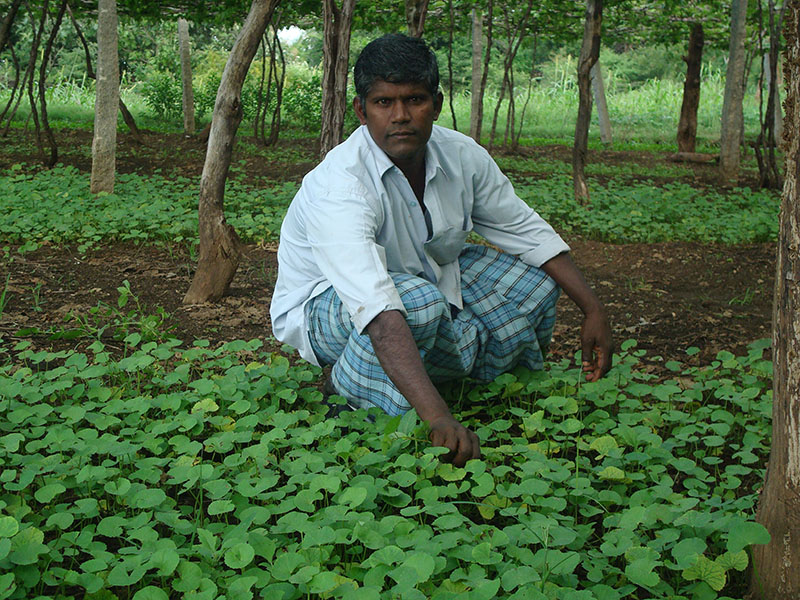
|
Establishment Of Herbal Garden
-
Gandhigram Trust
The land within the campus was selected for establishing herbal garden. Pipelines for irrigation have been arranged and Soil samples have taken from the field and tested for its nutrient status. Organic manures such as FYM, vermicompost and bio pest repelle
Read more »
|
|
|

|
Extraction Of Indigo Dyes
-
Gandhigram Trust
Indigo plant was cultivated in half an acre and 600S Kgs. in the first ratoon and 400Kg. in second ratoon was harvested. It was soaked in water over night. The next day decomposed plant was removed. Oxidation was carried out by using mechanical agitator for on
Read more »
|
|
|

|
Low cost paddy winnower(2012)Phase I
-
Mitraniketan
Paddy winnowing is a time consuming process and it requires more women workers. Currently there is lack of workers for the traditional activities connected with paddy cultivation. Different types of winnowers are available for large scale farmers. We have developed a paddy winnower with low cost
Read more »
|
|
|

|
Setting up of Community Vermicompost Unit
-
Centre for Indian Knowledge Systems (CIKS)
- Problem /need addressed by technology developed:
As far as organic farming, application of quality inputs at appropriate time would contribute to increase in yield of crops. Vermicompost is one such input adopted by organic farmers. Commercially, this is not avai
Read more »
|
|
|

|
Organic Seed Production
-
Centre for Indian Knowledge Systems (CIKS)
- Problem /need addressed by technology developed:
Seeds play a very crucial role in agriculture. In fact the success of any agricultural activity is largely dependent on the quality of seeds used. Often times in recent years there have been complaints of poor qual
Read more »
|
|
|

|
Documentation of Traditional Paddy Varieties
-
Centre for Indian Knowledge Systems (CIKS)
- Problem /need addressed by technology developed:
Most of the traditional paddy varieties were conserved by farmers for the following purpose (i) Traditional paddy varieties show resistance against pests and diseases (ii) Traditional paddy
Read more »
|
|
|

|
FISH NURSERY & AQUACULTURE
-
Society for Rural Industrialization (SRI)
In spite, of having large no of water bodies; perennial as well as seasonal, fish cultivation was not adopted very extensively in this area due to lack of knowledge and non availability of quality seeds.
A few farmers who took up fish cultivation were forced to purchase fish seed from nearby state
Read more »
|
|
|

|
Community neem seed processing unit
-
Centre for Indian Knowledge Systems (CIKS)
In organic farming, application of quality inputs at appropriate time would contribute to increase in yield of crops. Neem cake or Neem seed powder is one such input adopted by organic farmers. Commercially, this is available in market under different brand names. But there is a lot of adulteration
Read more »
|
|
|

|
Development of storage forms of biopesticides
-
Centre for Indian Knowledge Systems (CIKS)
There is a growing awareness among farmers and consumers about the ill effects of harmful chemical inputs used in the modern agriculture on living beings and environment. Now they are in search of safer and eco – friendly alternatives for chemicals inputs. Availability of organic plant protection in
Read more »
|
|
|

|
System of rice intensification (SRI) method of paddy cultivation
-
Centre for Indian Knowledge Systems (CIKS)
This technique requires minimum quantity of seeds and decreased quantity of water for cultivation. This in turn cuts down the input cost and water requirement. This technology plays a key role in the production of seeds. This includes cultivation of paddy crop without chemicals and it covers the pr
Read more »
|
|
|

|
Organic package of practices for Black gram, Green gram, Banana and Chilli
-
Centre for Indian Knowledge Systems (CIKS)
Problem / Need addressed by the technology
The technology is low cost and based on the locally available raw materials. This technology aids in the decrease of input costs, helps farmers to manage pests and diseases without pesticides and fetches a better market price for the produce that is organ
Read more »
|
|
|
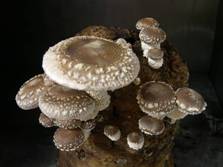
|
Shiitake Cultivation(2009)phase I
-
Himalayan Research Group (HRG)
Technology package for medicinal mushroom ‘Shiitake’ (Lentinula edodes) cultivation on saw dust of popular and eucalyptus enriched with natural ingredients was standardized and continued for verification of the results obtained on production and economics in the earlier studies. Resul
Read more »
|
|
|

|
Vermicomposting(2009)Phase I
-
Himalayan Research Group (HRG)
Conversion of biomass and animal excreta with earthworm (Eisenia foetida) into black granular crumbly powder is vermicompost. Animal excreta and biomass in mixed and digested with earthworms in a bed. 1 Kg earthworm/10 Kg biomass and animal excreta ratio was standardize to initiate vermicomposti
Read more »
|
|
|

|
Agro-technology of Selected Himalayan Medicinal Plants(2013)Phase I
-
Himalayan Research Group (HRG)
Swertia chirayita (Roxb. ex Fleming) Karsten sometimes also mentioned as Swertia chirata Buch.-Ham. was widely used as an ingredient in Ayurvedic medicines since times immemorial and in Himachal Pradesh this species is listed as Critically Endangered. Commercial cultivation technology standardiza
Read more »
|
|
|

|
Button Mushroom Cultivation(2013)Phase I
-
Himalayan Research Group (HRG)
The climate of all districts in Himachal Pradesh is suitable to take minimum 2 crops of button mushroom (Agaricus bisporus) under natural conditions for additional income generation for rural folks especially women. Quality mushroom compost and casing soil is prepared in the HRG unit at Village D
Read more »
|
|
|

|
Line Sowing Marker for crop sowing in hills(2014)Phase II
-
Himalayan Environmental Studies And Conservation Organisation (HESCO)
The feasibility trials were taken in the different crops in different locations. It was found suitable and observed that it reduces about 50-60% cost of the weeding, 10% of harvesting as compared to traditional methods and found healthy crops, which ultimately
Read more »
|
|
|

|
Organic pestcides(2013-14)Phase II
-
Society for Technology and Development (STD)
Trials were made on preparation & utilization of organic pesticides from Derak leaves, cow urine & Lassi on various vegetable crops. Most effective was found against Aphids & caterpillars of cabbage butterfly in cole crops.
Read more »
|
|
|

|
Production of Arbuscular Mycorrhyzal Fungi (AMF) in pot culture method
-
Vivekananda Institute of Biotechnology
Pot production of AMF inoculums is less expensive and thus the farmers can effort the price of this biofertilizer for cultivation. Substrate was optimized for enhanced multiplication of native AMF through pot culture technology for the low cost production of AM fungi. Pot culture method are ecologic
Read more »
|
|
|

|
A model for integrated biogas production with vermicomposting
-
Vivekananda Institute of Biotechnology
In this technology package kitchen waste and municipal waste (replacing cow dung) materials are utilized for the production of biogas in two levels. The slurry, produced in primary biogas plant is taken through a pipe / channel to secondary bio gas plants and then taken to the vermicompost unit whe
Read more »
|
|
|

|
In vitro production of planting material for cultivation of Elephant Foot Yam
-
Vivekananda Institute of Biotechnology
Central buds as well as lateral buds from the corms of field grown cultivars of Gajendra and Bidhan Kusum are cultured on Murashige and Skoog (MS) medium in the presence of various combinations of growth supplements. Callus found after 2 weeks. Pink opaque compact callus are maintained in dark condi
Read more »
|
|
|

|
Use of Neem Seed Kernel Extract in Pest Management
-
Vivekananda Institute of Biotechnology
Ripe neem seeds are collected without contact with soil, de-pulped in water, dried in shade and kept in gunny bag in cool and dry place. The seed are decorticated, grinded and the kernel powder is soaked in water (@ 50 g/L) overnight. The extract is filtered and sprayed on crop before the manifestat
Read more »
|
|
|

|
Liquid Biofertilizer (Azotobacter) for Foliar Spray
-
Vivekananda Institute of Biotechnology
This innovative approach involves production of Azotobacter in fermenter using specific growth medium, harvesting in 1:1 dilution with ½ strength of the same medium and packaging. The culture is mixed with tap water @ 10 ml/L and sprayed on the leaves of the targeted crop at an interval of 10-20 day
Read more »
|
|
|

|
Hand made paper from alternate sources of fiber ( Biopulping and Biobleaching)(Phase I: 2009-14)
-
Shri AMM Murugappa Chettiar Research Centre (MCRC)
Generally, the papers are made from wood pulp. This leads to deforestation. Secondly, pulping and bleaching of wood requires many chemical treatments and more energy and water. An alternate method of preparing paper from non woody plants such as Hibiscus cannabinus (Kenaf), Lemon grass, Palma
Read more »
|
|
|

|
Aquaponics(2016-2017) Phase II
-
Vigyan Ashram
Aquaponics is, simply integration of hydroponics (cultivation of plants without soil) and aquaculture (fish farming). In aquaponics system water from aquaculture is used as irrigation water for crop production and extra water returns back to fish tank. When this water circulated near root zone, n
Read more »
|
|
|

|
Egg incubator(2012-2013) Phase I
-
Vigyan Ashram
Initially the egg incubator machine developed by Vigyan Ashram was from scrap material with success rate of 12% only but over a period of 1 and half year the technology gets evolved, now the success rate latest machine at Vigyan Ashram is near about 92% for small is 100 egg machine and 85% for 50
Read more »
|
|
|

|
Plant Tissue Culture
-
Appropriate Rural Technology Institute (ARTI)
Vegetatively propagated crop species like sugarcane, banana, ginger, turmeric etc. offer a huge potential market for tissue culture but products of tissue culture are very costly. Low cost tissue culture uses pressure cooker instead of autoclave, rain water instead of distilled water and jam jars
Read more »
|
|
|

|
Farming on permanent raised beds
-
Appropriate Rural Technology Institute (ARTI)
Raised beds are made of a mixture of sand and soil, laid on a plastic film. All the soil related limiting factors (wrong pH, soil compaction, salinity, nutrient deficiency, poor aeration, weeds, pathogens etc.) are eliminated. Using adequate water, high dose of fertilizers and micronutrients, we
Read more »
|
|
|

|
Bamboo for Outdoor Structure
-
Appropriate Rural Technology Institute (ARTI)
Biodegradation of bamboo is retarded by impregnating it with a mixture of potassium dichromate, copper sulphate and boric acid. Impregnated bamboo can be used for constructing scaffolding for vines, greenhouses, fences, and even water holding structures.
Read more »
|
|
|

|
Low Cost Water Tank
-
Appropriate Rural Technology Institute (ARTI)
A 120 cm tall palisade structure of bamboo poles, with the intervening spaces woven into a wickerwork of bamboo, and an inset made out of a plastic film, form the tank. It is filled with potable water during the rainy season, after which it is covered by an opaque black plastic film. If the bamboo p
Read more »
|
|
|